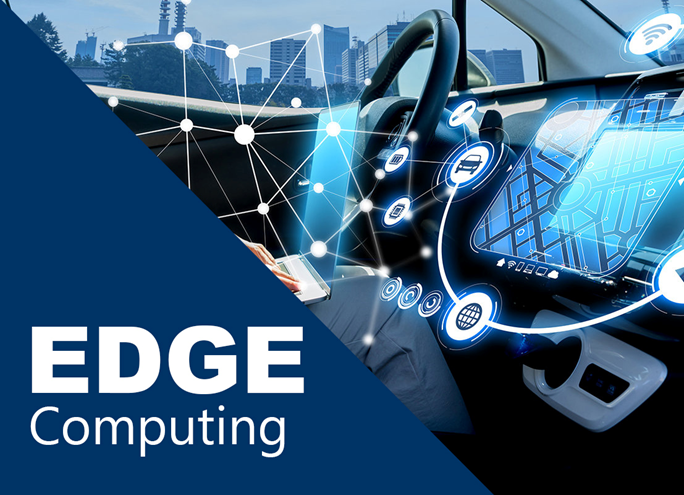
Cloud-based computing architecture is successfully resolving the business problems of organizations for more than a decade now. Instead of maintaining several data storage, cloud computing allows organizations to use centralized data storage. Even individuals tend to use cloud storage facilities, though they own personal devices with hard drives. But cloud computing has reached its limits with the influx of millions of IoT devices which generate a massive amount of data. International Data Corporation (IDC) has predicted that there will be 41.6 billion connected IoT devices and they will generate 79.4 zettabytes (approximately 1 ZB equal to 1 trillion GB) of data by 2025. At the moment, many IoT devices are connected to the clouds in order to store and process the data they generate. But, as many experts predict, it won’t be possible to continue the cloud computing architecture in the future. Therefore, the introduction of edge computing architecture will be the solution to overcome the difficulties that cloud computing cannot handle. Not only the Industrial Internet of Things (IIoT) devices, ordinary internet users also create a massive amount of data regularly through smart devices and computers. According to the statistics, Social media users upload 350 million photos to Facebook and 95 million photos to Instagram per day and also YouTube users upload more than 500 hours of videos every minute. Since, the transmission of this amount of data will affect negatively network resources, shifting to the alternative computing model like edge computing is inevitable in future.
Edge computing focus on brings the processing of data closer to where it generates. In traditional cloud computing, data send to the cloud-based data servers over the internet for processing. When the data volume is high, it creates negative impact on data latency and bandwidth. As a solution for these issues, edge computing allows processing the data generated by IoT devices closer to the edge of the network. This enables the real-time data processing by devices themselves or by local servers. It doesn’t mean that the cloud is completely eliminated. Still fewer processes run on the cloud servers and it only minimizes the data traveling between the cloud and devices. Usually, IoT devices generate massive amounts of raw data, by adopting edge computing, a large portion of data can be processed within the edge of the network and only the most critical set of data can be sent to the cloud. By moving the processing of data closer to the devices, edge computing architecture decentralizes the data servers and it also enables faster response time to the requests. It also minimizes the usage of network resources.
Examples of edge computing
About a decade ago, a common smart device equipped with features such as operating systems, sensors, Wi-Fi connectivity etc. But, nowadays a device has to be used machine learning (ML) to some extent to consider as a smart device. When it comes to IoT devices, machine learning broadly uses to define the algorithms used in those devices. Merging machine learning with edge computing will enable the new kind of experience to the users. For example, voice recognition is a prominent technology uses in smart speakers. These smart speakers recognize the users’ voice commands and perform accordingly. First-generation smart speakers totally depended on cloud connectivity. When the smart speaker receives a request, it sends it to the voice recognition services and waiting for the response. But, when these devices do common household tasks such as lighting control, door locks, CCTV cameras, it raised some user privacy concerns, because it sends private data to clouds. It also illogical to performs certain tasks such as turning on lights, closing window shades with cloud connectivity. Therefore, edge computing and machine learning algorithms can be used to perform such household tasks.
Self-driving vehicles or autonomous vehicles are trending tech in car manufacturing. These vehicles use different types of technologies such as sensors, cameras, lidar, radar, etc. It says that, an autonomous car generates 0.75 GB to 1 GB of data per second. These data need to be sent to the cloud data centers for process over the internet in order to autonomously operate the car. But, what will happen to a moving car, if the connectivity between cloud and car is lost? Edge computing enables to process the large portion of data onboard the vehicle and only the snippet of data send to the remote data centers for further analysis. As a result, it will reduce the time which requires to take the driving decisions.
Impact of edge computing on IoT
Latency
With the rise of internet-enabled devices, massive amounts of data transmitting between the devices and centralized data centers. When handling these data, latency is the key factor to be addressed. If a device completely depends on cloud connectivity, it’s impossible to expect the near-zero latency in data transmission. By eliminating the cloud connectivity, edge computing provides quicker data processing capabilities.
Bandwidth
Limitations in network bandwidth affect the efficiency of data processing. Due to these limitations, only a certain amount of data can be sent to the cloud. Edge computing infrastructures eradicates the bandwidth related issues by processing the data closer to the data source. And this approach only sends a small portion of important data to the cloud data centers and as a result, it will minimize the bandwidth usage.
Privacy and security
There is some criticism over cloud computing that, storing data in remote data centers may violate the privacy of users. Some experts argue that household IoT devices actually don’t need to connect with clouds to perform certain tasks. With edge computing, it’s possible to minimize the data flow that goes out from the devices and it will ultimately lower the risk of the vulnerability of data. Centralized clouds are more vulnerable to data breaches than distributed data storage. Since the edge computing allows to compute the data closer to the devices, it will ensure the safety of data.

